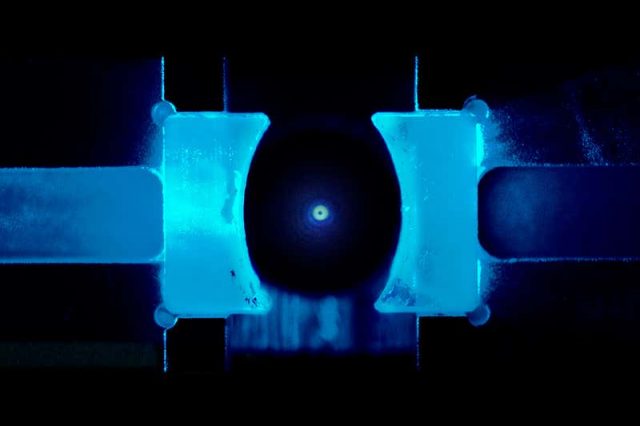MI weekly selection #361

Glass bead chilled to its ground state
Researchers have cooled a glass bead to close to absolute zero using a single laser with astonishing results: “Other cold-atom experiments can also create superpositions and quantum states, but what they can never do is create a superposition of all of the atoms in one place and all of the atoms in another place,” said study author Markus Aspelmeyer.
New Scientist
Engineered gut microbes protect honeybees
Honeybee gut microbes have been specially engineered to help protect the insects by tricking attackers into self-destructing. Scientists engineered common bee gut microbes to produce double-stranded RNA molecules that affect gene activity in mites and viruses, causing them to shut down their own genes.
ScienceNews
Lab-grown heart cells transplanted into human
Scientists from Japan’s Osaka University have successfully transplanted biodegradable induced pluripotent stem cell sheets into the first human subject to encourage damaged cardiac muscles to regenerate. The researchers aim to transplant the sheets into a total of 10 patients with ischemic cardiomyopathy within three years as part of a clinical trial.
New Atlas
The complexities of the squid brain
High-resolution MRI scans have revealed previously unknown neural pathways in squids. Researchers stained squid samples with dye or neural tracers, allowing them to map almost all previously known pathways as well as 145 new major pathways, most of which are associated with vision and motor systems.
ScienceAlert
What enabled bats to fly could have made them reservoirs for deadly viruses
Bats perform valuable ecosystem services including insect control and pollination, but they are also reservoirs for deadly zoonotic viruses including rabies, Marburg, Nipah and Ebola, and they may ultimately prove to be the source of the emerging coronavirus. Evolutionary changes that enabled bats to fly appear to have coincided with changes to their immune systems that allow them to coexist with viruses, making it vitally important to monitor, study and avoid contact with them, says Peter Daszak, president of EcoHealth Alliance.
The New York Times